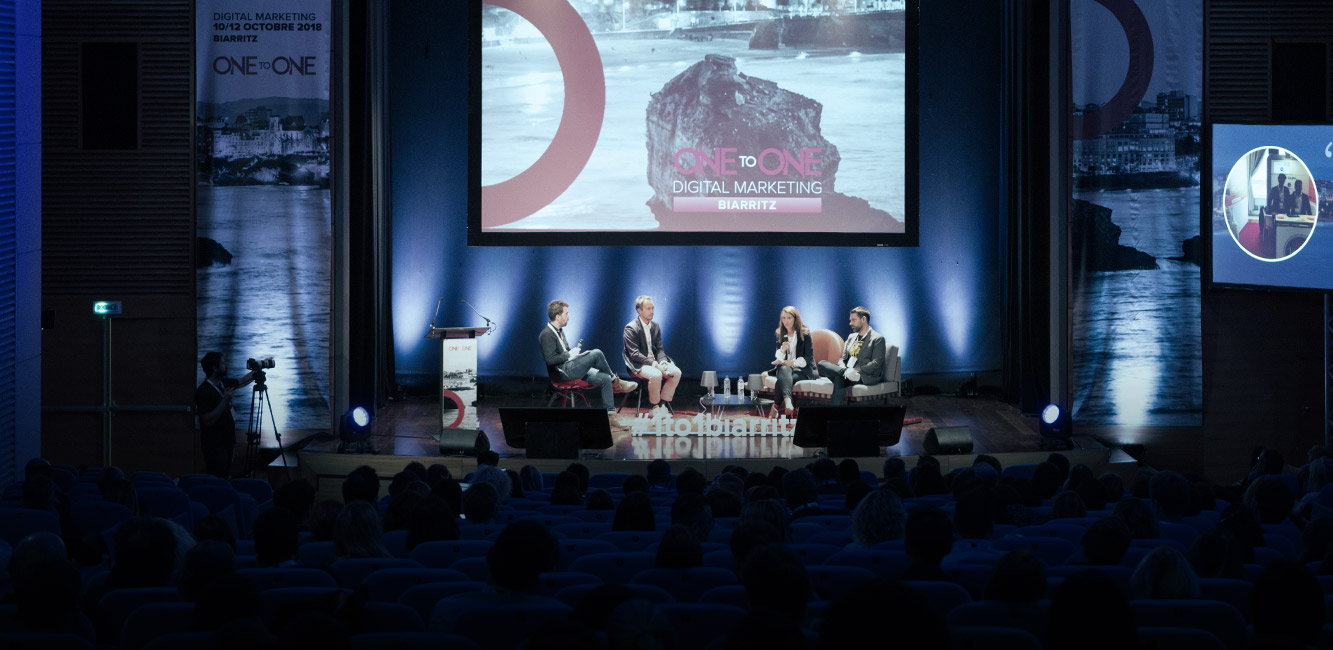Data Marketing: how can you use all your digital channels to collect data?
Antoine Le Sage, Country Manager at Qualifio, discusses the issue of data marketing during this One-to-One Biarritz 2019 conference.
What is a data? It is a frozen and transmissible information. All European Marketing Managers have noted the growing need to commercially exploit data. IT professionals also agree there is now a lot of data everywhere, and the challenge is to know how to collect it and organise it in order to make the most of the data marketing.
How to qualify the data?
There are three types of data:
- The first party data, the share of the data owners, resulting from the company’s learnings.
- The second party data, all partner data.
- The third-party data, the share of data purchased.
It is increasingly also about “zero party data”, in order to distinguish the proprietary data obtained without people having objected to it (opt-out), from the collection of data with their consent (opt-in), and which therefore have even more value, by means of declarative forms, or that of the SSO (unique authentication), by creating a user account.
How to optimise marketing data?
Today, the best source of data and customer knowledge is interactive content. The interaction implies an exchange with the target, which must be aroused by a lever (newsletter or other). To this can be added the interactive content, in the form of quizzes, gaming, contest games, editorial content to initiate consumer engagement. We are talking about interactive marketing.
Antoine Lesage explains that “transforming passive content into interactive content can make it twice as effective.”
Where to collect the data? Practical cases where Qualifio is a partner
There are many digital channels: terminals, tablets, points of sale. The audience will only be present on some of them: institutional website, social networks, blogs, etc. The form must be permanently connected to the CRM and all other digital tools.
Practical case 1: Purina
Purina is a company of the Nestlé group, very advanced in digital terms, and uses Adobe Campaign as data marketing tool. The study, in this case, is represented by cat and dog owners, but we need to be able to get more specific information about the needs of a particular cat or dog. Their technique is to perform couponing by offering discounts, but in the idea of finding out indirectly, in fine, about each animal. The target is no longer even the owner, but the animal itself (hence an opt-in rate of 55% for a low opt-out rate). All this information is then dumped into the Adobe Campaign tools.
Practical case 2: Cereal Partners Worldwide
It’s a joint venture between Nestlé and General Mills. This entity manages, globally, all brand promotions of the two partner groups. Each group starts with its own tools. The same campaign was launched in 25 different countries, and all data from both groups was then collected in an overall data marketing plan.
With a trip to Kenya to be won, the turnout was very high (UK opt-out rate of only 20% after two months of campaign). Objective achieved: data collection.
Practical case 3: L’Oréal (EMEA)
L'Oréal’s six luxury brands have chosen to work with Salesforce. L'Oréal also wants to know the profile of its customers, via digital technology. Using a sample, the L'Oréal group tries to determine which brand is preferred by each client, to which a sample is then sent.
Instead of delivering 150,000 to Sephora, they only deliver part of it, reserving the rest for this kind of practice. The sample is received in exchange for a chartered form, to be completed and returned. A month later, a survey is conducted; those who respond are taken over by Salesforce.
In total, L'Oréal achieved an opt-in rate of 66% for an opt-out rate of less than 3%. These data marketing campaigns are disseminated on both Facebook, Instagram and a mini-website e-retail because the data are standardised.
Practical case 4: Décathlon
Decathlon knows its audience thanks to the loyalty card issued in store. It’s a good way to find out what people are consuming in the store, but it doesn’t tell you what those same people might want to consume online. There is, for the moment, no connection between the two. The question then is to know, for example, which article is lacking to a particular person who is practising a particular sport, and thus to be able to better target the buyer. We’re here to get the missing information.
Practical case 5: RTL
Wishing to target its audience more intelligently, RTL created age groups with a view to data marketing. Within the RTL info stream of the mobile site, the listener then has access to a small pop-up window of instant information in phase with its generation. People who click on it are then asked to answer a few additional questions that inevitably result in a small rate of loss, to finally decide whether to register or not. This type of data can typically be segmented.
Practical case 6 : Pharmacie Ducret
Here, participation rates will be very low, but people who really feel concerned about the campaign. Each person is more than a prospect, a client whose health problems are already known upstream (about 95% opt-in rate on this type of study). These small operations run constantly, and the results are transmitted directly to Adobe tools.
Qualifio in a few words
Qualifio is a Belgian company that aims to help advertisers interact with their audience (seven offices and 75 jobs throughout Europe, 440 customers worldwide, including a hundred in France). Their aim is to position themselves on three main data marketing axes:
- acquisition of new profiles during data collection.
- audience segmentation and qualification.
- customer base loyalty (conversion tunnel).
Speaker :
Antoine Lesage, Qualifio



